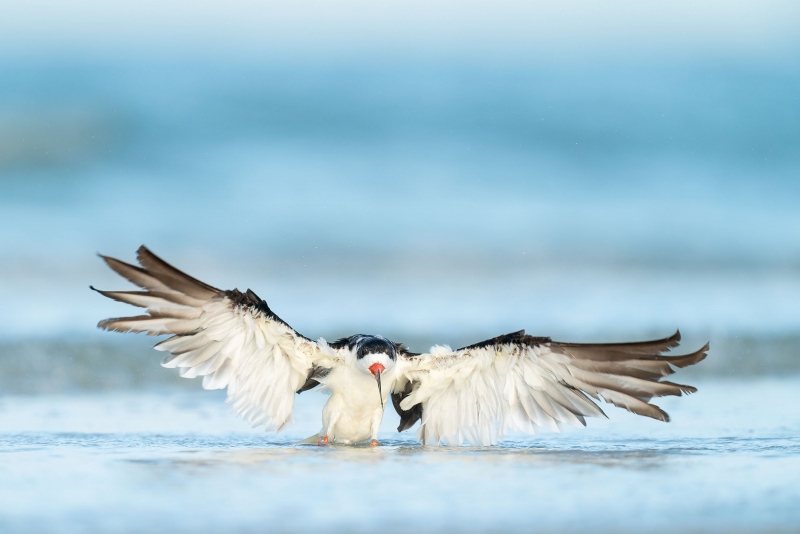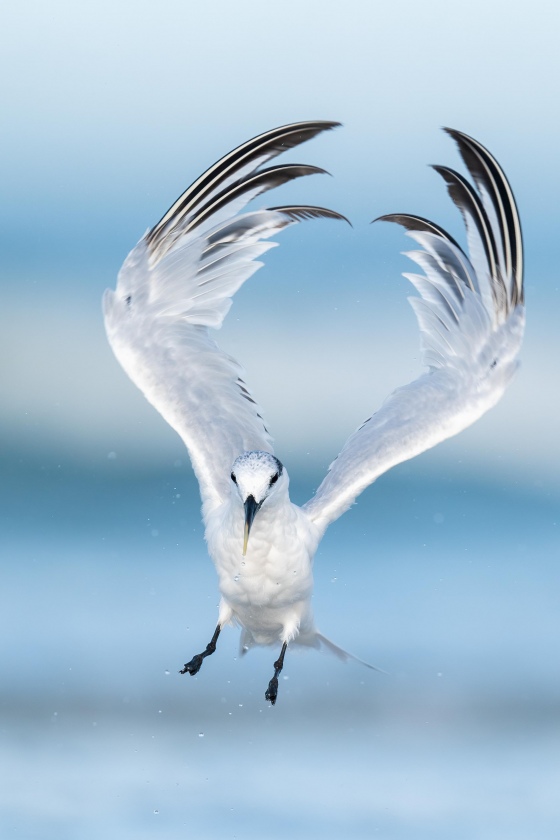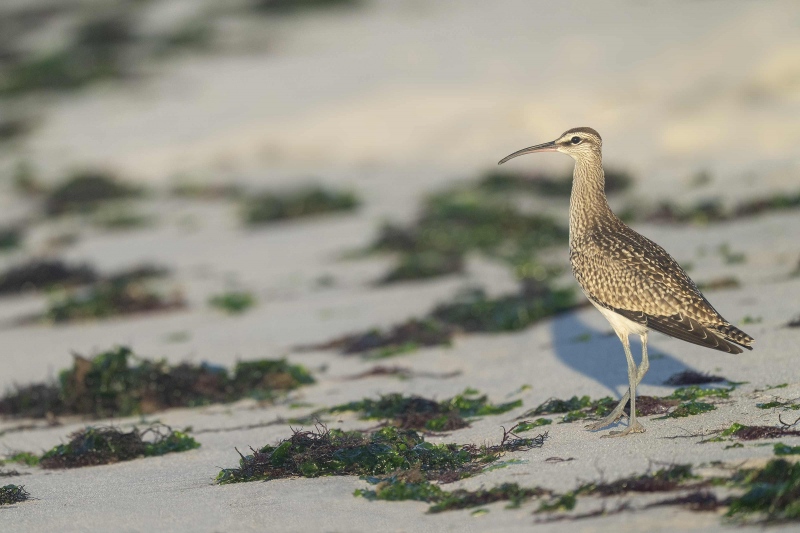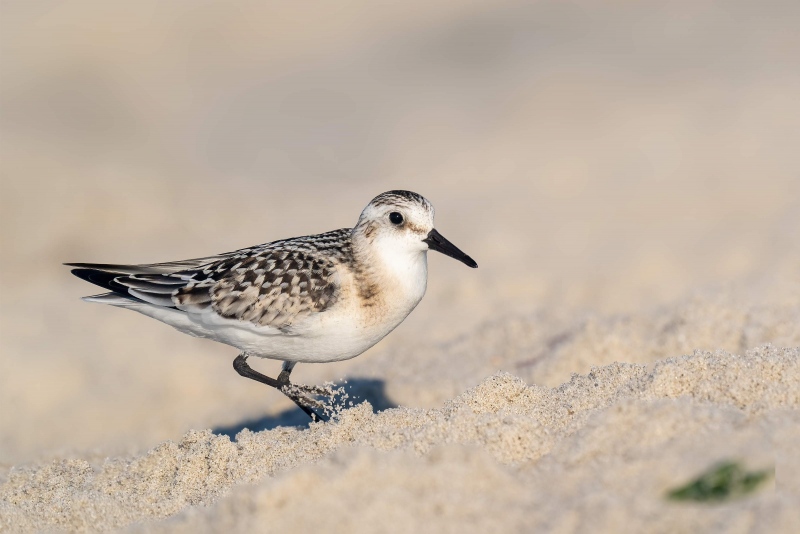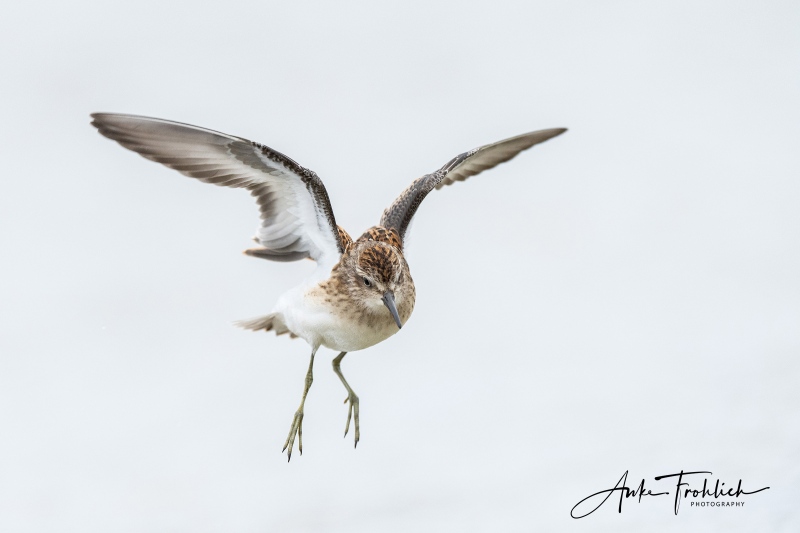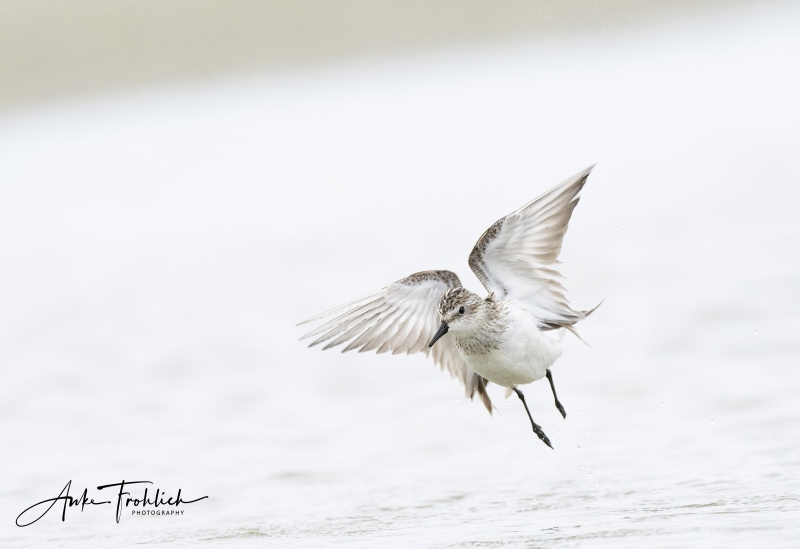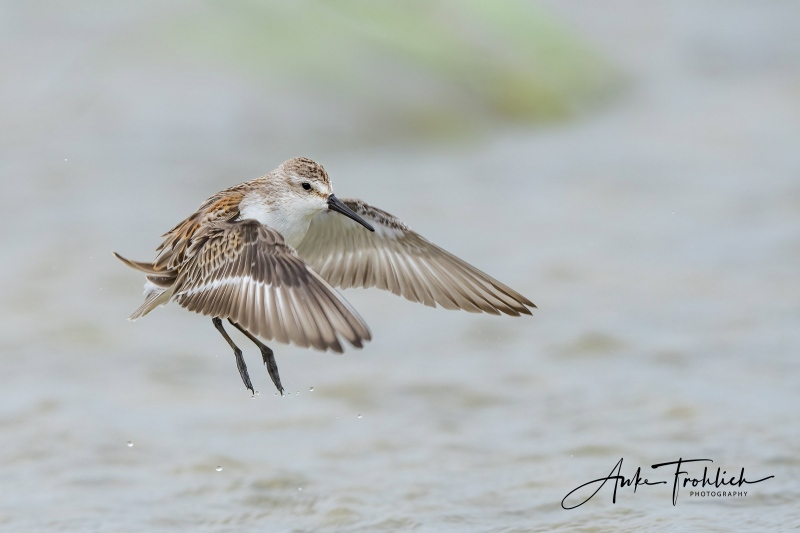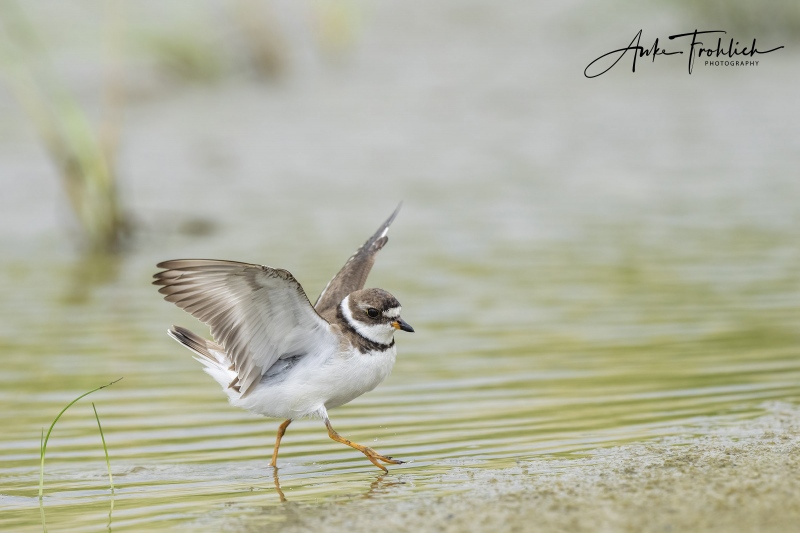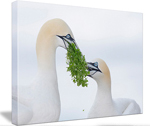September 12th, 2021 Hi-Res JPEGs
New visitors are reminded to click on each jpeg to enjoy a higher-resolution version.
You Fave?
Which of today’s two featured images is the strongest? All are invited to leave a comment explaining why they made their choice.
What’s Up?
Not much. I am getting ready for the trip south on the Auto Train on Monday afternoon. Keep reading for some more great tips on photographing birds flapping in place after a bath. And Fort DeSoto is a great place to put what you’ve learned into action. See details on the three DeSoto IPTs at the bottom of this post. Today (was) Saturday September 11 2021 … Wherever you are, and whatever you are doing, I hope that you too have/had a great day.
Remember that you can find some great photo accessories (and necessities!) on Amazon by clicking on the Stuff tab on the orange/yellow menu bar above. On a related note, it would be extremely helpful if blog-folks who, like me, spend too much money on Amazon, would get in the habit of clicking on the Amazon logo link on the right side of each blog post when they shop online. As you might expect, doing so will not cost you a single penny, but would be appreciated tremendously by yours truly. And doing so works seamlessly with your Amazon Prime account.
This blog post took about an hour to prepare (including the time I spent on the image optimizations) and makes 254 consecutive days with a new one. Please remember that if an item — a Delkin flash card, or a tripod head — for example, that is available from B&H and/or Bedfords, is also available in the BAA Online Store, it would be great, and greatly appreciated, if you would opt to purchase from us. We will match any price. Please remember also to use my B&H affiliate links or to save 3% at Bedfords by using the BIRDSASART discount code at checkout for your major gear purchases. Doing either often earns you free guides and/or discounts. And always earns my great appreciation.
Selling Your Used Photo Gear Through BIRDS AS ART
Please know that the longer you wait to sell your used gear, the less you will get for it …
Selling your used (or like-new) photo gear through the BAA Blog is a great idea. We charge only a 5% commission. One of the more popular used gear for sale sites charged a minimum of 20%. Plus assorted fees! Yikes. They went out of business. And e-Bay fees are now up to 13%. The minimum item price here is $500 (or less for a $25 fee). If you are interested please scroll down here or shoot us an e-mail with the words Items for Sale Info Request cut and pasted into the Subject line :). Stuff that is priced fairly — I offer pricing advice to those who agree to the terms — usually sells in no time flat. Over the past year, we have sold many dozens of items. Do know that prices on some items like the EOS-1D Mark IV, the old Canon 100-400, the old 500mm, the EOS-7D and 7D Mark II and the original 400mm DO lens have been dropping steadily. Most recently the price of used Canon 600mm f/L IS II lenses have been dropping like a rock with the introduction of the 600 III. You can always see the current listings by clicking here or on the Used Photo Gear tab on the orange-yellow menu bar near the top of each blog post page.
Right now, there are lots of great buys on the Used Gear Page.
Please Remember
With income from IPTs now close to zero, please, if you enjoy and learn from the blog, remember to use one of my two affiliate programs when purchasing new gear. Doing so just might make it possible for me to avoid having to try to get a job as a Walmart greeter and will not cost you a single penny more. And if you use Bedfords and remember to enter the BIRDSASART code at checkout, you will save 3% on every order and enjoy free second-day air shipping. In these crazy times — I am out at least forty to sixty thousand dollars so far due to COVID 19 (with lots more to come) — remembering to use my B&H link or to shop at Bedfords will help me out a ton and be greatly appreciated. Overseas folks who cannot order from the US because of import fees, duties, and taxes, are invited to help out by clicking here to leave a blog thank you gift if they see fit.
New and Better Bedfords Discount Policy!
You can now save 3% on all of your Bedfords photo gear purchases by entering the BIRDSASART coupon code at checkout. Your discount will be applied to your pre-tax total. In addition, by using the code you will get 2nd day air shipping via Fed Ex.
Grab a Nikon AF-S Teleconverter TC-14E III and save $14.99. Purchase a Canon EOS R5 and your discount will be $116.97. Purchase a Sony FE 600mm f/4 GM OSS lens and save a remarkable $389.94! Your Bedford’s purchase no longer needs to be greater than $1,000.00 for you to receive a discount. The more you spend, the more you save.
Money Saving Reminder
Many have learned that if you need a hot photo item that is out of stock at B&H and would enjoy free second-day air shipping, your best bet is to click here, place an order with Bedfords, and enter the coupon code BIRDSASART at checkout. If an item is out of stock, contact Steve Elkins via e-mail or on his cell phone at (479) 381-2592 (Central time). Be sure to mention the BIRDSASART coupon code and use it for your online order to save 3% and enjoy free 2nd-day air shipping. Steve has been great at getting folks the hot items that are out of stock at B&H and everywhere else. The wait lists at the big stores can be a year or longer for the hard to get items. Steve will surely get you your gear long before that. For the past year, he has been helping BAA Blog folks get their hands on items like the SONY a9 ii, the SONY 200-600 G OSS lens, the Canon EOS R5, the Canon RF 100-500mm lens, and the Nikon 500mm PF. Steve is personable, helpful, and eager to please.


Gear Questions and Advice
Too many folks attending BAA IPTs (remember those?) and dozens of photographers whom I see in the field and on BPN, are–out of ignorance–using the wrong gear, especially when it comes to tripods and more especially, tripod heads… Please know that I am always glad to answer your gear questions via e-mail.
|
|
|
This image was created on 25 September 2020 at Fort DeSoto. While seated on dry sand, I used the hand held Sony FE 600mm f/4 GM OSS lens with the Sony FE 1.4x Teleconverter(at 840mm) and the AF King, the Sony Alpha a9 II Mirrorless Digital Camera (Body Only). ISO 2000. Exposure determined via Zebras with ISO on the Thumb Wheel: RawDigger showed that the exposure was dead-solid perfect: 1/2500 sec. at f/5.6 (wide open) in Manual mode. AWB at 8:18am on barely sunny morning.
Lower Center Zone/AF-C with Bird-Eye/Face Detection performed just about perfectly and produced a sharp-on-the-eye image.
Image 1: Black Skimmer adult bathing
|
Bathing Bird Flapping Tendencies
As noted previously here often, birds that are dipping their breasts into the water will almost always jump into the air and flap their wings when they finish their baths. It is best to frame wider rather than tighter for the flapping after bath shot. Sometimes the birds may re-land in the water and take a second bath. And sometimes they will fly a short distance to the shore to preen. By paying careful attention to the wind direction you might be able to determine the direction of flight … And it almost goes without saying that you will be looking for situations where the wind and the light are behind you.
|
|
|
This image was created on 25 September 2020 at Fort DeSoto. While seated on dry sand, I used the hand held Sony FE 600mm f/4 GM OSS lens with the Sony FE 1.4x Teleconverter(at 840mm) and the AF King, the Sony Alpha a9 II Mirrorless Digital Camera (Body Only). ISO 1000. Exposure determined via Zebras with ISO on the Thumb Wheel: RawDigger showed that the exposure was dead-solid perfect: 1/2000 sec. at f/5.6 (wide open) in Manual mode. AWB at 8:20am on then fairly sunny morning.
Center Zone/AF-C with Bird-Eye/Face Detection performed just about perfectly and produced a sharp-on-the-eye image.
Image 2: Sandwich Tern flapping after bath
|
Stuff
This image was, thanks to the superb image quality of sharp a1 image files, created from a horizontal original. Note that if you are capable of hand holding a long, fast telephoto lens it is far easier to create images that depict action than when working on a tripod …
Bathing Bird Location/Water Depth Tendencies
The odds are that once you see a single bird take a bath, another will soon fly in to the exact same spot to bathe. Usually, but not always, the birds will be of the same species, or as with today’s two featured images, of approximately the same size. Small sandpipers require shallower water for their baths than do gulls and terns, so you will never see them bathing in the same spot.
The aqua water of the Gulf are ideal backdrops for images of bathing birds. Scroll down to learn about the three Fort DeSoto IPTs. When I call out, “Bathing bird; get ready for the flap!,” many folks are often amazed. “How did you know that that would happen?” How? it almost always does. Studying and understanding bird behavior is an easy way to improve as a bird photographer.
The Lessons
By keeping your eyes open, by studying the light and the wind, and by being aware of the tendencies of bathing birds, you can take advantage of these exciting situations and create some stunning action images of birds flapping (and preening) after bathing.
Via e-mail from Muhammad Arif
I had a great time at Fort De Soto. Thank you for all the instruction, for your help and pointers; my photography has already improved tremendously and I’ve never made such good bird photos before. I wish I could’ve joined you on Monday and Tuesday morning as well but work got in the way. It was also nice to meet everyone on the IPT; sorry that I missed you, Ray. Thanks again for everything and I hope to join you at a future IPT sometime again.
|
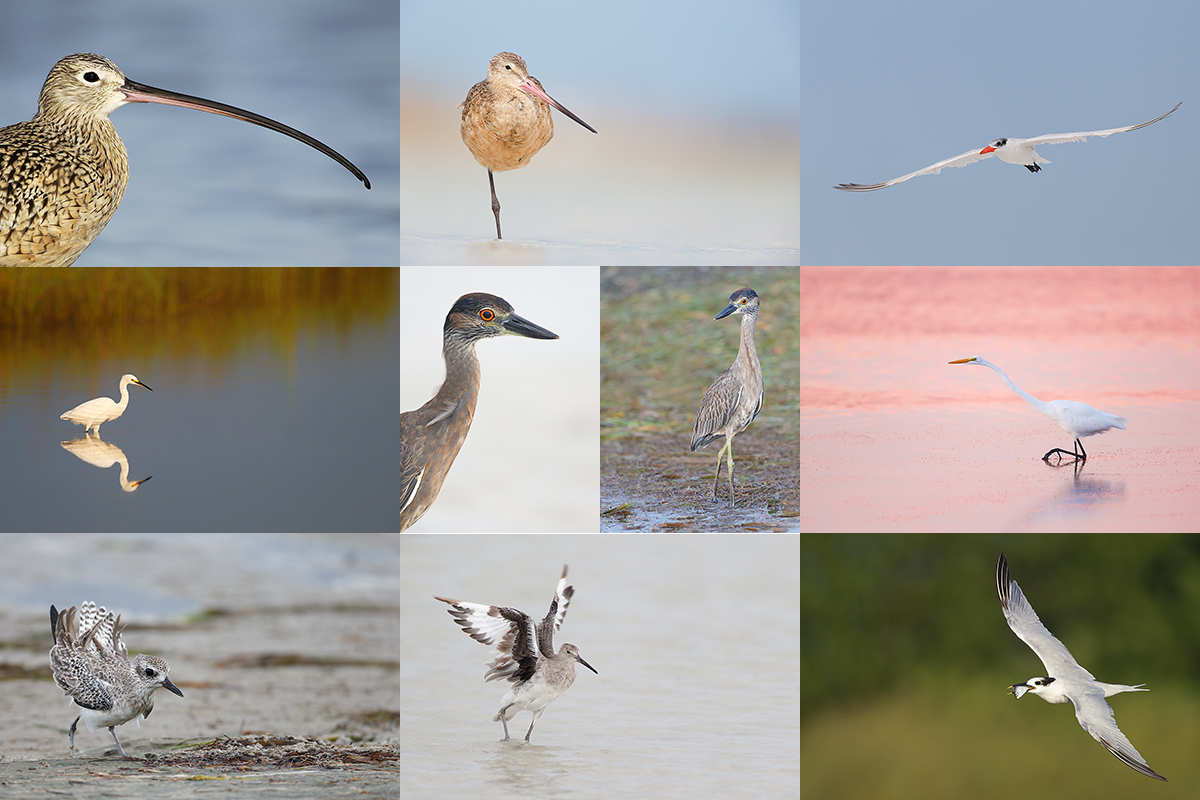
|
|
Fort DeSoto in fall is rife with tame birds. All of the images in this card were created at Fort DeSoto in either late September or very early October. I hope that you can join me there this fall. Click on the composite to enjoy a larger version.
Clockwise from upper left to center: Long-billed Curlew, Marbled Godwit, Caspian Tern, Great Egret, Sandwich Tern with fish, Willet, Black-bellied Plover threat display, Snowy Egret, 2-year old Yellow-Crowned Night-Heron, juvenile Yellow-Crowned Night-Heron.
|
The Fall 2021 Fort DeSoto Instructional Photo-Tours
Fall 2021 Fort DeSoto Instructional Photo-Tour #1
3 1/2 Days: Sunday 19 September through the morning session on Wednesday 22 September 2021. $1999.00 includes three working lunches. Limit six photographers/Openings 5.
Fall 2021 Fort DeSoto Instructional Photo-Tour #2
3 1/2 Days: Tuesday 5 October through the morning session on Friday 8 October. $1999.00 includes three working lunches. Limit six photographers/Openings 5.
Fall 2021 Fort DeSoto Instructional Photo-Tour #3
3 1/2 Days: Tuesday 19 October through the morning session on Friday 22 October. $1999.00 includes three working lunches. Limit six photographers/Openings 5.
Fort DeSoto in Fall
Fort DeSoto, located just south of St. Petersburg, FL, is a mecca for migrant shorebirds and terns in fall. There they join hundreds of egrets, herons, night-herons, and gulls that winter on the T-shaped peninsula. With any luck at all, we should get to photograph one of Florida’s most desirable shorebird species: Marbled Godwit. Black-bellied Plover and Willet are easy, American Oystercatcher is pretty much guaranteed. Great Egret, Snowy Egret, Great Blue Heron, Tricolored Heron, and White Ibis are easy as well and we will almost surely come up with a tame Yellow-crowned Night-Heron or two. And we will get to do some Brown Pelican flight photography. In addition, Royal, Sandwich, Forster’s, and Caspian Terns will likely provide us with some good flight opportunities as well. Though not guaranteed, Roseate Spoonbill and Wood Stork might well be expected. And we will be on the lookout for a migrant passerine fallout in the event of a thunderstorm or two.
On this IPT, all will learn the basics and fine points of digital exposure. Nikon and Canon folks will learn to get the right exposure every time after making a single test exposure, and SONY folks will learn to use Zebras so that they can be sure of making excellent exposures before pressing the shutter button.. Everyone will learn how to approach free and wild birds without disturbing them, to understand and predict bird behavior, to identify many species of shorebirds, to spot the good situations, to choose the best perspective, to see and understand the light, and to design pleasing images by mastering your camera’s AF system. Most importantly, you will surely learn to evaluate wind and sky conditions and understand how they affect bird photography. And you will learn how and why to work in Manual mode (even if you’re scared of it). The best news is that you will be able to take everything you learn home with you so that you will be a better photographer wherever and whenever you photograph.
There will be a Photoshop/image review session during or after lunch (included) each full day. That will be followed by Instructor Nap Time.
These IPTs will run with only a single registrant (though that is not likely to happen). The best airport is Tampa (TPA). Once you register, you will receive an e-mail with Gulfport AirBnB information.
A $500 deposit is due when you sign up and is payable by credit card. Balances must be paid by check after you register. Your deposit is non-refundable unless the IPT sells out with six folks, so please check your plans carefully before committing. You can register by calling Jim or Jennifer during weekday business hours at 863-692-0906 with a credit card in hand, or by sending a check as follows: make the check out to: BIRDS AS ART and send it via US mail here: BIRDS AS ART, PO BOX 7245, Indian Lake Estates, FL 33855. You will receive a confirmation e-mail with detailed instructions, clothing, and gear advice. Please shoot me an e-mail if you plan to register or if you have any questions.
|
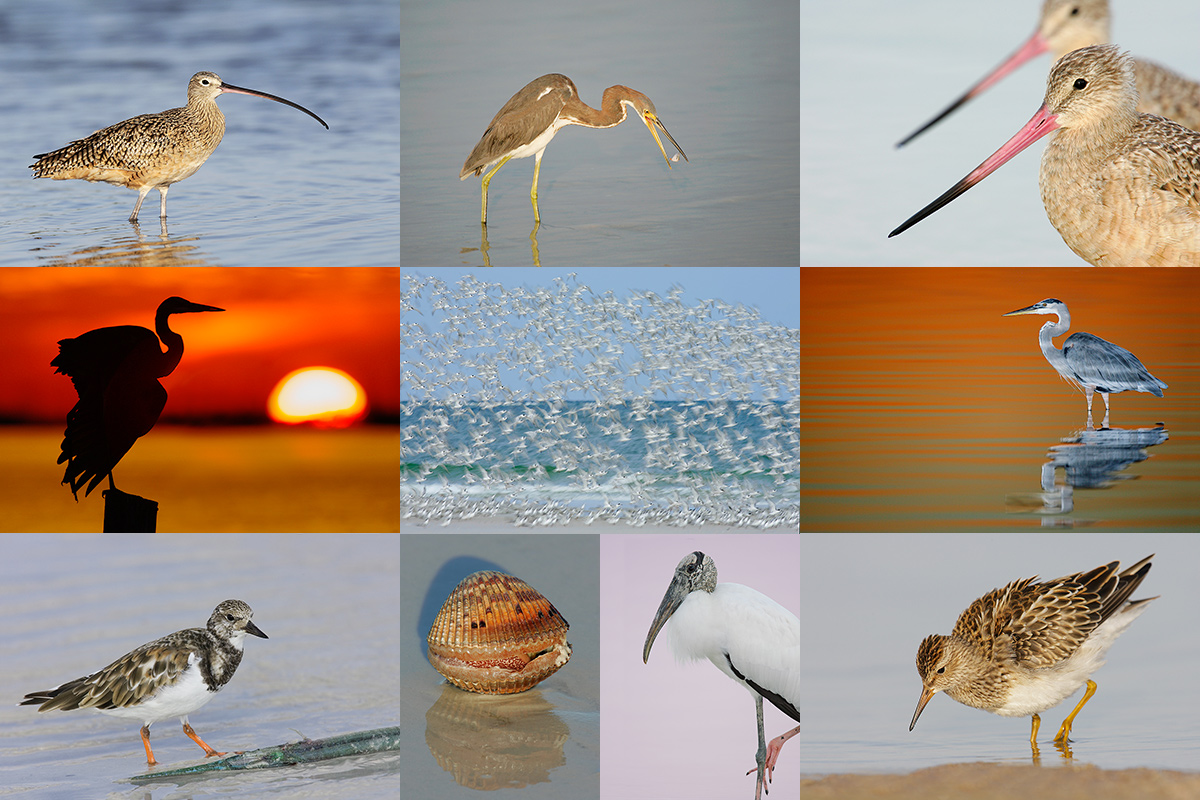
|
|
Clockwise from upper left to center: Long-billed Curlew, juvenile Tricolored Heron, Marbled Godwits, Great Blue Heron, juvenile Pectoral Sandpiper, Wood Stork, smiling Sea Scallop, Ruddy Turnstone scavenging needlefish, Great Blue Heron sunset silhouette at my secret spot, and southbound migrant tern flock blur.
|
Up Early, Stay Out Late!
Obviously folks attending an IPT will be out in the field early and stay late to take advantage of the sweetest light and sunrise and sunset colors (when possible). The good news is that the days are relatively short in early fall. I really love it when I am leaving the beach on a sunny morning after a great session just as a carful or two of well-rested photographers are arriving. The length of cloudy morning sessions will often be extended. Click on the composite to enjoy a larger version.
Typos
With all blog posts, feel free to e-mail or to leave a comment regarding any typos or errors.
September 10th, 2021 What’s Up?
It is late on Friday 10 September 2021. I walked 4.4 miles in Central Park with the 200-600GM and the a1. I saw lots of migrant songbirds: American Redstarts, several Northern Parulas, two Bay-breasted Warblers, a few Common Yellowthroats and Black and White Warblers, a Northern Waterthrush, an Ovenbird, and a Red-Eyed Vireo. With the bright sun and heavily leaved trees, photography conditions were horrific at a best. I raised my lens twice and never created a single image. Wherever you are, and whatever you are doing, I hope that you too have a great day.
Remember that you can find some great photo accessories (and necessities!) on Amazon by clicking on the Stuff tab on the orange/yellow menu bar above. On a related note, it would be extremely helpful if blog-folks who, like me, spend too much money on Amazon, would get in the habit of clicking on the Amazon logo link on the right side of each blog post when they shop online. As you might expect, doing so will not cost you a single penny, but would be appreciated tremendously by yours truly. And doing so works seamlessly with your Amazon Prime account.
This blog post took about 90 minutes to prepare (including the time I spent on the image optimizations) and makes 253 consecutive days with a new one. Please remember that if an item — a Delkin flash card, or a tripod head — for example, that is available from B&H and/or Bedfords, is also available in the BAA Online Store, it would be great, and greatly appreciated, if you would opt to purchase from us. We will match any price. Please remember also to use my B&H affiliate links or to save 3% at Bedfords by using the BIRDSASART discount code at checkout for your major gear purchases. Doing either often earns you free guides and/or discounts. And always earns my great appreciation.
Selling Your Used Photo Gear Through BIRDS AS ART
Please know that the longer you wait to sell your used gear, the less you will get for it …
Selling your used (or like-new) photo gear through the BAA Blog is a great idea. We charge only a 5% commission. One of the more popular used gear for sale sites charged a minimum of 20%. Plus assorted fees! Yikes. They went out of business. And e-Bay fees are now up to 13%. The minimum item price here is $500 (or less for a $25 fee). If you are interested please scroll down here or shoot us an e-mail with the words Items for Sale Info Request cut and pasted into the Subject line :). Stuff that is priced fairly — I offer pricing advice to those who agree to the terms — usually sells in no time flat. Over the past year, we have sold many dozens of items. Do know that prices on some items like the EOS-1D Mark IV, the old Canon 100-400, the old 500mm, the EOS-7D and 7D Mark II and the original 400mm DO lens have been dropping steadily. Most recently the price of used Canon 600mm f/L IS II lenses have been dropping like a rock with the introduction of the 600 III. You can always see the current listings by clicking here or on the Used Photo Gear tab on the orange-yellow menu bar near the top of each blog post page.
Right now, there are lots of great buys on the Used Gear Page.
Please Remember
With income from IPTs now close to zero, please, if you enjoy and learn from the blog, remember to use one of my two affiliate programs when purchasing new gear. Doing so just might make it possible for me to avoid having to try to get a job as a Walmart greeter and will not cost you a single penny more. And if you use Bedfords and remember to enter the BIRDSASART code at checkout, you will save 3% on every order and enjoy free second-day air shipping. In these crazy times — I am out at least forty to sixty thousand dollars so far due to COVID 19 (with lots more to come) — remembering to use my B&H link or to shop at Bedfords will help me out a ton and be greatly appreciated. Overseas folks who cannot order from the US because of import fees, duties, and taxes, are invited to help out by clicking here to leave a blog thank you gift if they see fit.
New and Better Bedfords Discount Policy!
You can now save 3% on all of your Bedfords photo gear purchases by entering the BIRDSASART coupon code at checkout. Your discount will be applied to your pre-tax total. In addition, by using the code you will get 2nd day air shipping via Fed Ex.
Grab a Nikon AF-S Teleconverter TC-14E III and save $14.99. Purchase a Canon EOS R5 and your discount will be $116.97. Purchase a Sony FE 600mm f/4 GM OSS lens and save a remarkable $389.94! Your Bedford’s purchase no longer needs to be greater than $1,000.00 for you to receive a discount. The more you spend, the more you save.
Money Saving Reminder
Many have learned that if you need a hot photo item that is out of stock at B&H and would enjoy free second-day air shipping, your best bet is to click here, place an order with Bedfords, and enter the coupon code BIRDSASART at checkout. If an item is out of stock, contact Steve Elkins via e-mail or on his cell phone at (479) 381-2592 (Central time). Be sure to mention the BIRDSASART coupon code and use it for your online order to save 3% and enjoy free 2nd-day air shipping. Steve has been great at getting folks the hot items that are out of stock at B&H and everywhere else. The wait lists at the big stores can be a year or longer for the hard to get items. Steve will surely get you your gear long before that. For the past year, he has been helping BAA Blog folks get their hands on items like the SONY a9 ii, the SONY 200-600 G OSS lens, the Canon EOS R5, the Canon RF 100-500mm lens, and the Nikon 500mm PF. Steve is personable, helpful, and eager to please.


Gear Questions and Advice
Too many folks attending BAA IPTs (remember those?) and dozens of photographers whom I see in the field and on BPN, are–out of ignorance–using the wrong gear, especially when it comes to tripods and more especially, tripod heads… Please know that I am always glad to answer your gear questions via e-mail.
|
|
|
This image was created on 7 September 2021 at Nickerson Beach. While standing, I used the hand held Sony FE 600mm f/4 GM OSS lens with the Sony FE 1.4x Teleconverter(at 840mm) and The One, the Sony Alpha 1 Mirrorless digital camera. ISO 1250. Exposure determined via Zebras with ISO on the Thumb Wheel: RawDigger showed that the exposure was nearly perfect, about 1/6 stop too dark. 1/2000 sec. at f/5.6 (wide open) in Manual mode. AWB at 7:14am on sunny morning.
Tracking: Zone/AF-C with Bird-Eye/Face Detection performed perfectlyby nailing the bird’s eye.
Image 1: Whimbrel in fresh juvenal plumage
|
Berm (n): a long narrow wedge of loose material, mostly sand, but also of loose shells, pebbles, flotsam, and jetsam with a steep slope that faces the ocean.
The Juvie Whimbrel
I had been sitting on the beach trying to work the edge of a Black Skimmer flock in hopes of getting some nice frames of the gorgeous juvenile birds. With the clear skies and a southwest wind, I was not having much luck. I glanced toward the surf and saw the long skinny neck of a shorebird just above the top of the berm. I was somewhat puzzled.
I approached with caution, and once I saw the whole bird, I knew instantly with its decurved bill and distinctive eye-stripe that it was a Whimbrel, not a common sight on the open beaches of Long Island. The warm tones and evenly patterned feathers told me that it was a fresh juvenile, just down from the sub-arctic tundra where this species breeds. I was not thrilled by the seaweed background and could have lessened its impact by getting on the ground, but I was pretty sure that the young bird would fly. I made a few frames and in a flash it was gone over the ocean heading east.
|
|
|
This image was also created on 7 September 2021 at Nickerson Beach. While seated on dry sand at the top of the berm, I used the hand held Sony FE 600mm f/4 GM OSS lens with the Sony FE 1.4x Teleconverter(at 840mm) and The One, the Sony Alpha 1 Mirrorless digital camera. ISO 1250. Exposure determined via Zebras with ISO on the Thumb Wheel: RawDigger showed that the exposure was nearly perfect, about 1/6 stop too dark. 1/2000 sec. at f/7.1 (stopped down 2/3 stop) in Manual mode. AWB at 7:41am on sunny morning.
Tracking: Zone/AF-C with Bird-Eye/Face Detection performed perfectlyby nailing the bird’s eye.
Image 2: Sanderling in fresh juvenal plumage
|
Bird Behavior Tends to be Repetitive
I was sitting in the same spot that I created yesterday’s featured image, the screaming Ring-billed Gull. Two juvenile Sanderlings kept walking up to the top of the berm to rest. Then they would head down to the surf to forage a bit more. After that happened several times, I scootched about four yards closer to their resting spot and lo and behold, the came right back up. I made lots of very sharp portraits, but the birds were both angling slightly toward me. I made this image as one of the young birds reacted to being buzzed by a skimmer — note the flying sand. It flew back down to the beach, but hand holding at 840, I wound up clipping the attempted action shots.
Topaz Sharpen AI on Motion Blur improved this one 100%!
Great Topaz News!
As regular readers know, I run DeNoise on virtually every image that I process immediately after executing the crop with the Delete Cropped Pixels box checked. For images made in sunny conditions, I used Standard. For images made in low light, I use Low Light. You can check all four methods by using the Comparison View but I rarely do that any more as I am confident as noted above.
Folks who use the BAA Topaz link to purchase Sharpen AI, DeNoise AI, or the Utility Bundle (or any other Topaz plug-ins), will receive a 15% discount by entering the ARTHUR15 code at checkout. If the stuff is on sale (as it usually is), you save 15% off of the sale price! To get the discount you must use my link and you must enter the discount code. Be sure to start with this link.
Those who purchase Sharpen AI, DeNoise AI, or any other Topaz plug-ins using my link and then entering the ARTHUR15 code at checkout can e-mail to request a short Getting Started with Topaz e-Guide. Please include a copy of your Topaz receipt that shows the discount. Aside from the basics, the guide explains how to install the plug-ins so that they appear in the Photoshop Filter Menu.
SONY Alpha a1 Set-up and Info Group
The SONY Alpha a1 Set-up and Info Group is going great guns as more and more folks chime in with thoughtful questions and experience-based answers. As the a1 is becoming more readily available, more and more folks are getting their hands on this amazing body. With two folks joining yesterday, we are now up to an astounding 79 lucky and blessed photographers! Early on, we discussed the myriad AF options. I gave my opinion as to the best one for flight and general bird photography. More recently, we have been in contact with folks at SONY sharing our thoughts, experiences, and frustrations with the EVF blackout problem.
All who purchased their Alpha a1 bodies via a BAA affiliate link will receive a free subscription to the Sony Alpha a1 Set-Up and Info Updates after shooting me their receipts via e-mail. (Note: it may take me several days to confirm B&H orders.) This same service may be purchased by anyone with an a1 body via a $150.00 PayPal sent to birdsasart@verizon.net indicating payment for Alpha a1 Info Updates. Alternatively, folks can call Jim weekdays at 1-863-692-0906 to pay via credit card. New members will receive composite e-mails that summarize all previous discussions.
Typos
With all blog posts, feel free to e-mail or to leave a comment regarding any typos or errors.
September 9th, 2021 Word Press Disappearing Act
For the third time in a week, a published blog post disappeared. I am re-publishing this one — with apologies, on the morning of 12 September 2021.
Unanswered e-Mails?
If you send an e-mail to us and you do not hear back in a day or two, please call Jim at the office, let him know what’s up, and give him your correct e-mail address. At times, Apple Mail and other e-mail providers mysteriously transform your correct e-mail into a bogus e-mail address that looks something like this: outlook_1234F5678@outlook.com when you hit Reply. You will never be aware of the problem … A gentleman named Roger Williams keeps e-mailing me about selling some used gear and is surely wondering why I do not answer. It is always a good idea to include your correct e-mail address in the body of your e-mail 🙂
The BAA Camera User’s Guides
Be sure to check out the Mining the Comments section to learn of a big R5 AF shortcoming … One of the big lessons is that some folks do not realize the great value of the BIRDS AS ART Camera User’s Guides. Over the years, we have sold several thousand Camera User’s Guides with perhaps two complaints at most. On occasion, folks have sent me links to FB posts with comments such as this: Why spend $XX dollars on artie’s guides when the same info is available on Joe Blow’s website for free? The answer is usually very simple. You get what you pay for. When I have visited the free camera guide sites and watched the free videos I have always found that the free info is superfluous or wrong and that the key info is simply nowhere to be found. On the other hand, folks who have previously purchased our camera User’s Guides do not hesitate to get their hands on the guides for the latest greatest camera bodies. Recently, we have sold 157 Sony Guides and have 79 folks in the a1 Group. There are guides available for many of the older Canon bodies and for the Nikon D850 as well.
What’s Up?
Not much. I will be on the Auto Train heading south on Monday and will be back at ILE midday on Tuesday. Today is Thursday September 9 2021. It is drizzling here in NYC. Wherever you are, and whatever you are doing, I hope that you too have a great day. Wherever you are, and whatever you are doing, I hope that you too have a great day.
Remember that you can find some great photo accessories (and necessities!) on Amazon by clicking on the Stuff tab on the orange/yellow menu bar above. On a related note, it would be extremely helpful if blog-folks who, like me, spend too much money on Amazon, would get in the habit of clicking on the Amazon logo link on the right side of each blog post when they shop online. As you might expect, doing so will not cost you a single penny, but would be appreciated tremendously by yours truly. And doing so works seamlessly with your Amazon Prime account.
This blog post took about two hours to prepare and makes 252 consecutive days with a new one. Please remember that if an item — a Delkin flash card, or a tripod head — for example, that is available from B&H and/or Bedfords, is also available in the BAA Online Store, it would be great, and greatly appreciated, if you would opt to purchase from us. We will match any price. Please remember also to use my B&H affiliate links or to save 3% at Bedfords by using the BIRDSASART discount code at checkout for your major gear purchases. Doing either often earns you free guides and/or discounts. And always earns my great appreciation.
Mining the Comments
Though folks ask some great questions in the Comments section of each blog post, few readers return to take advantage of the solid info that is often available in the responses. Below are a few examples from the recent A Killer Vertical AF Tip for All Systems blog post here.
From David Policansky
Great tip and photo, Artie. Is the Cabin EOS 7D Mark II “modern” enough to have that feature?
Hey Dr. Fish, Do you have my 7D Mark II Camera User’s Guide? That feature is covered in detail there.
with love, artie
From BPN Avian Super Moderator Dan Cadieux
Hi David, I still use that camera as well, and yes, that feature is there. Nothing special to do: just move the focus point(s) as needed, and next time you go vertical it is at the same spot as last time used in that orientation.
artie’s Response
Thanks, Dan.
From my 7D Mark II Camera User’s Guide:
C.Fn III/12. Orientation linked AF point.
I have grown to love “1: Select different AF points.” This allows you to select one sensor (and even a different AF Area Selection Mode) when working in horizontal format and another sensor (and again, even a different AF Area Selection Mode) when working vertically. The camera detects the orientation and “remembers” your AF settings for horizontal and your AF settings for vertical.
There is more on this topic in the guide. And tons more on the AF system.
with love, artie
My Last Comment
Dan and Folks,
The R5 does offer the Orientation linked AF point feature. It is covered in detail in my R5 Camera User’s Guide.
From that guide:
The fact is that Canon really dropped the ball here by not allowing the camera to remember a different AF Method for each orientation. In other words you are not able to set and have the camera remember Face Detection plus Tracking for one camera orientation and Zone AF — — for example — for another. It was possible to do that with previous Canon bodies.
Don’t you love it when great features are eliminated in newer supposedly better products?
with love, artie
|
|
|
This image was created on 28 August by Anke Frohlich at Nickerson Beach. While seated on damp sand, she used the hand held Sony FE 600mm f/4 GM OSS lens and The One, the Sony Alpha 1 Mirrorless digital camera. ISO 2500. Exposure determined via Zebras with ISO on the rear dial: 1/3200 sec. at f/5 (stopped down 2/3 stop). AWB at 11:56am on a windy very cloudy stormy morning.
Tracking: Zone/AF-C was active at the moment of exposure and performed perfectly. Be sure to click on the image to enjoy the larger version.
Image #1: Least Sandpiper, juvenile flapping after bath
Image Courtesy of and Copyright Anke Frohlich Photography
|
Anke’s Impressive Shorebird Images
As noted in several previous blog posts, August 28th was a banner today at Nickerson Beach. Together, we created more than 11,000 images on a windy stormy morning. Our single session landed more than six hours and when we finally did leave the beach at 2:20pm, the action was still torrid.
Please remember that Anke has been photographing birds for only fourteen months …
|
|
|
This image was also created on 28 August by Anke Frohlich at Nickerson Beach. While seated on damp sand, she used the hand held Sony FE 600mm f/4 GM OSS lens and The One, the Sony Alpha 1 Mirrorless digital camera. ISO 3200. Exposure determined via Zebras with ISO on the rear dial: 1/3200 sec. at f/6.3 (stopped down 1 1/3 stops). AWB at 12:02pm on a windy, very cloudy, stormy day.
Tracking: Zone/AF-C was active at the moment of exposure and performed perfectly. Be sure to click on the image to enjoy the larger version.
Image #2: Semipalmated Sandpiper, juvenile flapping after bath
Image Courtesy of and Copyright Anke Frohlich Photography
|
Hand Holding the SONY 600mm f/4 Lens
Anke rarely uses a tripod when working with her Sony 600 f/4 GM and the a1, preferring instead to hand hold for action. I used the same lens on a tripod for most of the day, often with the 1.4X TC, and to put it mildly, she killed me on the flapping after bath images … If you are physically able to hand hold the big lenses, it if far easier to get on the action, acquire focus, and frame and follow the action while keeping the bird somewhere near the center of the frame than it is when working off a tripod. Don’t get me wrong, Anke had many hundreds of mis-framed action shots, but her best images were — for the most part, a lot better than mine.
|
|
|
This image was also created on 28 August by Anke Frohlich at Nickerson Beach. While seated on damp sand, she used the hand held Sony FE 600mm f/4 GM OSS lens and The One, the Sony Alpha 1 Mirrorless digital camera. ISO 1600. Exposure determined via Zebras with ISO on the rear dial: 1/3200 sec. at f/6.3 (stopped down 1 1/3 stops). AWB at 12:52pm on a then windy, cloudy, stormy day.
Tracking: Zone/AF-C was active at the moment of exposure and performed perfectly. Be sure to click on the image to enjoy the larger version.
Image #3: Western Sandpiper, juvenile flapping after bath
Image Courtesy of and Copyright Anke Frohlich Photography
|
Eye Replacement
I loved this image because it showed the rufous scapulars that are characteristic of juvie Westerns. Note also the long bill with a slightly de-curved tip. The bird’s eye was closed in this frame so I replaced it with the open eye from the previous frame in the series. Learn how (and tons more) in the Eye Doctor section of Digital Basics II.
|
|
|
This image was also created on 28 August by Anke Frohlich at Nickerson Beach. While seated on damp sand, she used the hand held Sony FE 600mm f/4 GM OSS lens and The One, the Sony Alpha 1 Mirrorless digital camera. ISO 2000. Exposure determined via Zebras with ISO on the rear dial: 1/3200 sec. at f/6.3 (stopped down 1 1/3 stops). AWB at 1:00pm on a windy, cloudy, stormy day.
Tracking: Zone/AF-C was active at the moment of exposure and performed perfectly. Be sure to click on the image to enjoy the larger version.
Image #4: Semipalmated Plover landing after bath
Image Courtesy of and Copyright Anke Frohlich Photography
|
Your Fave?
Which of today’s four featured images is your favorite. All are invited to leave a comment and let us know why they made their choice.
Typos
With all blog posts, feel free to e-mail or to leave a comment regarding any typos or errors.
|
|




